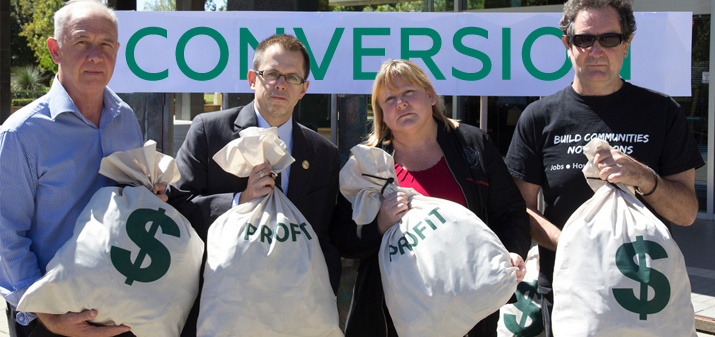Myths about conversion or how to become a leader
 Conversion rate is an important point in online advertising analytics. A large number of views does not always mean the same number of clicks. And clicks do not always mean conversion. “Why pump so much money into online advertising?!”, you ask. And what is generally considered a normal conversion rate - 3, 6, 10%?
Conversion rate is an important point in online advertising analytics. A large number of views does not always mean the same number of clicks. And clicks do not always mean conversion. “Why pump so much money into online advertising?!”, you ask. And what is generally considered a normal conversion rate - 3, 6, 10%?
Experts who analyzed several thousand campaigns and landing pages in Adwords found that there is a layer of advertisers who receive 2-3 times more conversion actions than the average for this direction. The question arose: on what does such a result depend? From the correctness of the actions of the marketer? Or maybe the size of the budget? It is not clear what leaders do that others do not.
First of all, this is an established stereotype: the owners of companies conduct their RC based on the experience of others. They copy competitors, use the opinions of experts, adopt the practices of the best.
Now think about it: if competitors, just like you, listen to the opinion of gurus, adopt the experience of competitors, and so on and so forth, then how are you going to stand out from the crowd? This can be compared with faith in a talisman, a talisman.
Optimizing form fields is not always justified
 Let's go further: if we analyze a lot of tricks for advertising campaigns, we can see that most of them, one way or another, talk about optimizing fields in registration / application forms, CTA buttons, images, etc. And if you track the result of all these efforts, you can see that it is extremely rare that the result “shoots” with numbers of 40-50% of the conversion. Standard indicators - 10-15%. Yes, constant testing of landing pages and their elements gives a result, but not such that you can break out of the average.
Let's go further: if we analyze a lot of tricks for advertising campaigns, we can see that most of them, one way or another, talk about optimizing fields in registration / application forms, CTA buttons, images, etc. And if you track the result of all these efforts, you can see that it is extremely rare that the result “shoots” with numbers of 40-50% of the conversion. Standard indicators - 10-15%. Yes, constant testing of landing pages and their elements gives a result, but not such that you can break out of the average.
Here is the result of one test. In this case, micro conversions were optimized:
The line in the middle is the original. The blue line is the test page indicator. A 3x jump in conversions in a day! You can't imagine better! But as it turned out, they rejoiced too early. Then there is a sharp decline, after 3 days the conversion rate of the “original” catches up with the “test”, and after a few more days it is ahead. And this is the result of most split tests.
According to experts, actions at the “micro” level do not work. Here you need a template break. According to the results of the research, here is how the conversion rates in Adwords (landing pages) were distributed:
- a quarter of accounts - <1%;
- middle stratum of participants – 2.35%;
- leading participants - 5.31%;
- TOPs - >11.45%.
In quantitative terms, we have the following picture:
If your conversion rate is more than 5%, then, according to the data, your result is 2 times higher than that of 65% of advertisers. If you look at the leaders, then their superiority can be 5 times higher than the rest. And this is not nonsense, but rather a pattern. Here's what the industry statistics show:
How to be in leadership positions
 Here are some recommendations:
Here are some recommendations:
- Change the value proposition (offer) . Do you remember landing pages within the same niche? How much did they differ from each other? Hardly. Standard “delivery”, “build” with a call to call / write and get advice “absolutely free”.
The business sells in the first step. Practice shows that the more complex the product, the more difficult the path the user must go to complete the conversion action. The first step, when a visitor enters the lead category, should be as simple as possible. Therefore, work needs to be done to ensure that the offer is the least burdensome.
- Change the sequence of actions. This applies more to those who offer financial and IT services. Those. where you need to fill in many fields with the necessary information. If a person sees 10 mandatory fields, he most likely will not reach the “register” button. The way out of the situation is this: let the person buy / order / download, and only then offer to register.
Track at what stage user actions are terminated. Analyze and simplify this path.
- Set up remarketing. It really works. Studies show that with the right settings, returns increase by 55-60%.
- Test 10 landing pages to find the most effective one. This will take some time, but testing will help to discard the "slag" and leave only the most effective version of the page.
Good strategy, but quite expensive. Competitors are “stepping on their heels”, the cost per click is getting higher. Even worse is the situation when there are very few or no targeted requests at all (the variant with innovative products).
- Don't focus on conversions. "How?" - you will say - "after all, conversion is the main indicator of effectiveness." No matter how strange it may sound, but this indicator can be misleading. Here's what to look out for:
- Consider traffic sources. Even if your offer is strong, it will easily drown in an avalanche of “dirty” traffic when users with little interest or inappropriate requests start coming to the landing page.
- Take into account external factors. In addition to internal factors, external factors must also be taken into account: holidays, the holiday season, advertising, publications in the media, and even a specific time or weather can affect the quality of traffic.
- Calculate ROI of optimization. Conversion for the sake of conversion is pointless. Agree that a large number of people who filled out all the forms, sent applications, does not mean the same high rate of purchases. The numbers can be as follows: with a 10% conversion rate into an application, the output may be 1% converted into a sale.
And here is the picture at the bottom of the sales funnel. One of the agencies provided their case, which shows how during the split-testing of the landing page, the test showed only 40% of competitors. At the final stage, the conversion of the leader turned out to be 2.5 times less.
Don't count registrations, count profits. Analyze not website conversion, but business conversion.
